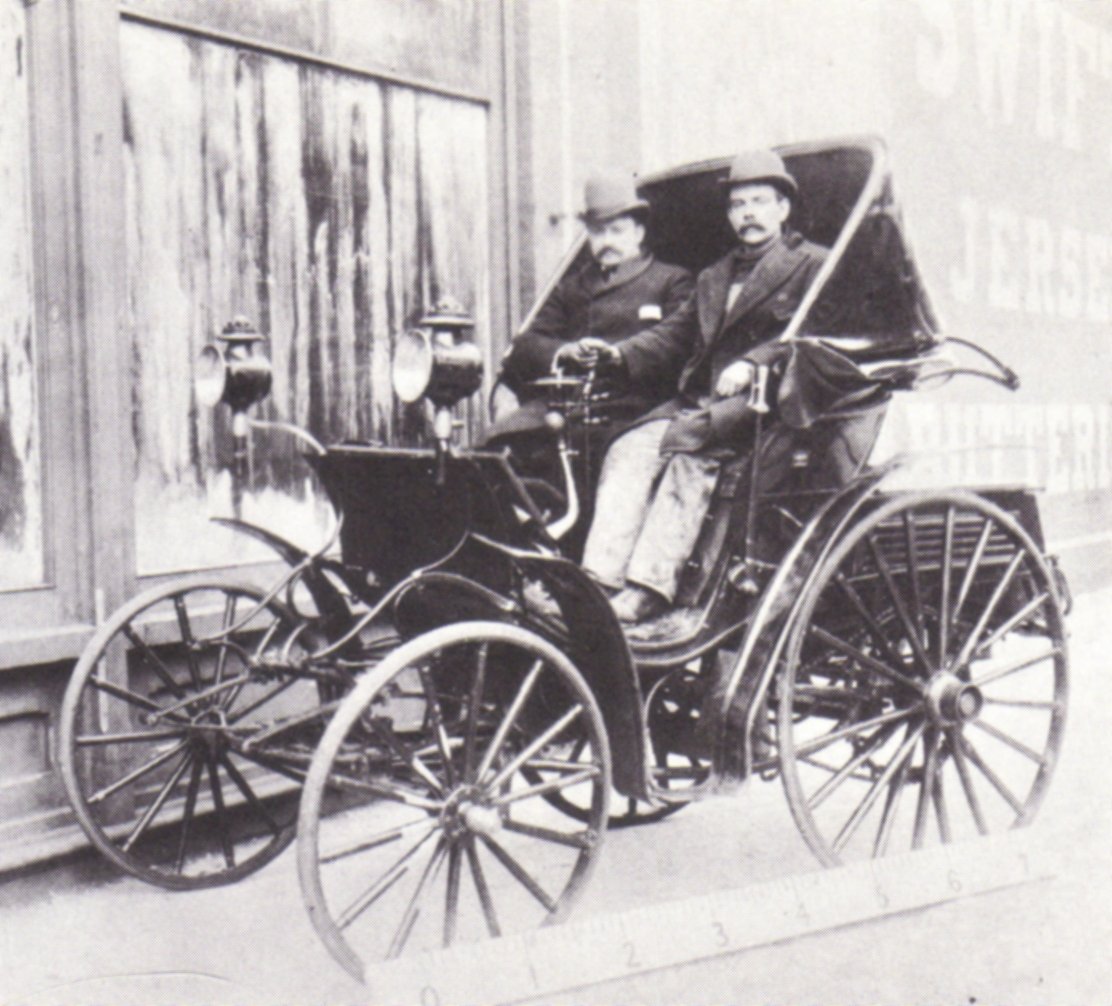Not So Fast
Four miles per hour.
Even if you’re more familiar with the metric system, you probably can figure out that 4 MPH isn’t all that fast. Usain Bolt, who is often referred to as the world’s fastest person, holds the world record in the 100 meter dash, finishing the race at 9.58 seconds. That’s 23.35 miles per hour. An NFL linebacker weighing 240 pounds may run a 40 yard dash in 4.8 seconds — that’s 17 miles per hour. And Wilson Kipsang, who holds the fastest-ever marathon time in 2:03:23, ran the 26.2 mile Berlin race with an average pace of 12.74 miles per hour. Four miles per hour? That’s a bit faster than a brisk walk.
It’s also the speed that the car was going during one of history’s first fatal car accidents.
On August 17, 1896, a man named Arthur Edsall was behind the wheel of a Roger-Benz horseless carriage, probably like the one depicted below, tootling around London. The car was designed to go only about two miles per hour — a speed which was likely the unofficial or customary speed limit — and probably, required some tinkering to go faster, but somehow, it was traveling at the breakneck speed of twice that. Unfortunately, a 44-year-old woman named Bridget Driscoll was stepping off the curb, into the street, as Edsall came blazing down the pass, in relative terms. Edsall “rung his bell and shouted,” according to a retrospective by the BBC, but one witness claimed that any such efforts were wasted, as the car was approach at a “tremendous pace” akin to a “fire engine,” going “as fast as a good horse could gallop.”

Edsall’s car struck Driscoll. One witness — a passenger in the car — said that Edsall had indeed yelled for Driscoll to move but she was “bewildered” and likely frozen in the face of the four-wheeled machine slowly barreling toward her. Regardless, the accident shouldn’t have been that big of a problem. Getting hit by a linebacker or a marathon runner, as noted above, isn’t often a fatal collision. But a much slower tap (by admittedly a much larger thing) led to tragedy that day. Driscoll died a few minutes later, becoming the United Kingdom’s first pedestrian to die in a car accident.
The crash was investigated and the result, per Wikipedia, was ultimately ruled an “accidental death” after a six hour inquest.
Bonus Fact: Had the UK not overturned a critical part of the Locomotive Act 1865, Bridget Driscoll may not have died that day. In 1896, but before the accident, the UK removed the Act’s requirement that “road locomotives” (which included cars like Edsall’s) employ a “a man to walk in front of road vehicles [. . .] carrying a red flag,” per Wikipedia. Another Wikipedia entry quotes the relevant part of the now-comical act, noting that the flag carrier “shall precede such locomotive on foot by not less than sixty yards, and shall carry a red flag constantly displayed, and shall warn the riders and drivers of horses of the approach of such locomotives, and shall signal the driver thereof when it shall be necessary to stop.”
From the Archives: Life in the Fast Lane: Why you shouldn’t speed in Finland if you make a lot of money.
Related: “Car: The Definitive History of the Automobile,” a coffee table book. 29 reviews, 4.6 stars.
